The source of information is the psalter!
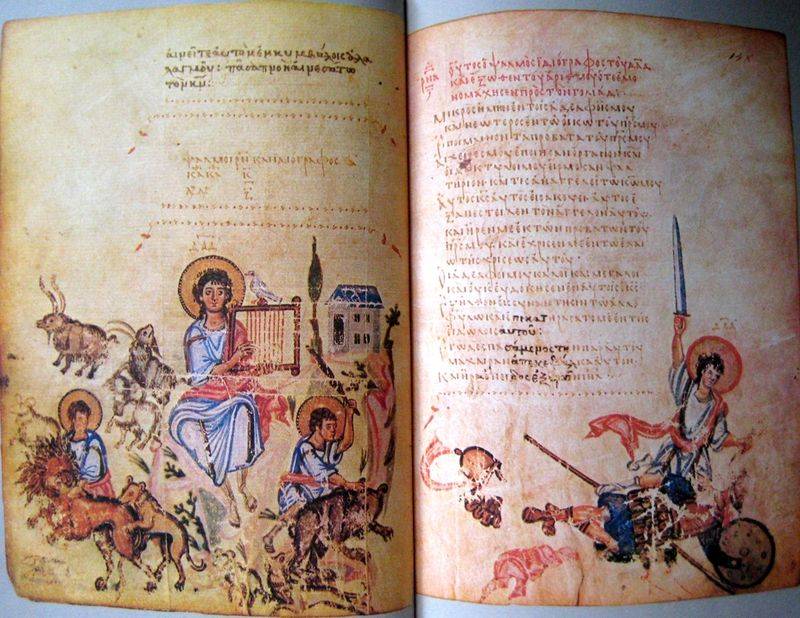
Khludovskaya Psalter (IX century). On miniatures (XIII century. We note that at this time the miniatures of the psalter were completely rewritten) King David is depicted playing the psaltery on the left, on the right he is conquering enemies and wild animals. Stored in the collection of handwritten documents of the State Historical Museum in Moscow, number 129d.
The Psalter of Latrell is kept in the British Library, where many famous medieval illuminated manuscripts are located. All those who saw her say that this book is not only very beautiful, but that it is fascinating. And it is famous primarily for its funny and colorful images of rural England, the grotesque figures of the world of demons and the information available in it about the equipment of the knights of medieval England!
This is what the Psalter of Latrell looks like.
This illustrious manuscript (and you can't say differently!) Was written and decorated by unknown book masters around 1320 - 1340, and today it is one of the most striking among the surviving manuscripts of this era. Suffice it to say that the psalter is painted with bright colors, decorated with silver and gilding, and therefore very beautiful. No less important is the fact that, by its nature, by its bizarre artistic design, it is not similar to any other hymnal among all existing ones.
Very popular in the Middle Ages theme: "The assault of the knights of the castle of love." "Psalter Latrell."
"Storm of the castle of love" close-up. The plates are very clearly visible - knight shoulder plates and drawings on them, as well as gold-plated helmets bascinetts with visor, mail armor with gold-plated patch plates on the legs (the figure on the left).
Now it is necessary to tell a little about that, and what is this hymnal, since the word is rather ancient and is hardly used today.
There is a biblical text - “Psalms” –150 of ancient songs, which together are included in one of the books of the Old Testament. In the era of the Middle Ages (as indeed now), they became the basis of Christian dogma for both clergy and their flock. Many in the past have learned to read precisely the Psalms. These psalms were often recorded separately from the Bible itself, a calendar of church holidays was printed (or handwritten) with them, and various corresponding prayer times were added to them. Such a “book for religious reading” was called the Psalter.
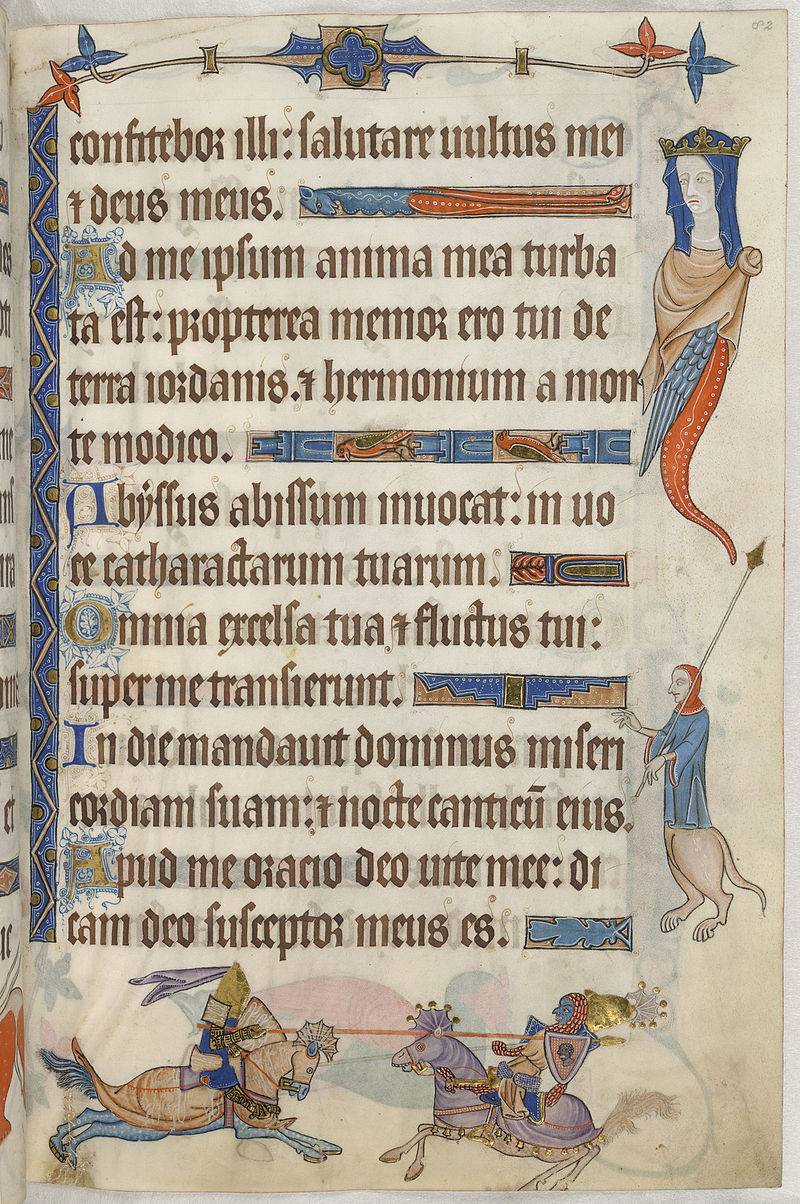
Knightly duel from the Psalms of Latrell. European knight on the left, Saracen on the right.
The same image close up.
This manuscript received its name for a reason; it was already called that day by the name of its customer, whose image is on its pages. He was Jeffrey Luttrell (1276 - 1345) - the owner of the estate Irnham (Lincolnshire, England) - one of the many belonging to his feudal possessions. His ancestors faithfully served King John (John Landless - the rebellious brother of King Richard I the Lionheart, whose valor tirelessly sang Walter Scott), for which they were awarded land property. Jeffrey Luttrell himself very successfully married. The dowry of his wife also constituted the land, which further increased his wealth.
For the first time, the Psalter of Latrell was shown to the public in 1794, but it was only in 1929 that the British Museum acquired its property from Mary Angela Noyes, the wife of poet Alfred Noyes, for £ 31500. The manuscript has the following dimensions: leather cover - 370 x 270 mm, page - 350 x 245 mm. Dimensions of written text - 255 x 170 mm. The psalter was illustrated by several artists at once, which is noticeable by the small difference in their styles. The first artist is called "Decorator". He used a linear drawing style instead of a two-dimensional approach to drawings. The second artist is called “Colorist,” and in the text belong to him images of such figures as Christ and the saints. The third artist, “Illustrator,” is characterized by a flatter and more two-dimensional style of writing than the first artist. The fourth artist is called the “Master” and he showed himself to be a specialist in rural themes and outlandish grotesques. He also portrayed the Latrell family. Moreover, it is noted that he used paints with great skill to show the effect of shadow and texture. This technique is very similar to the style of manuscripts from eastern England of the time. In general, the iconographic analysis of illustrations provides a lot of information about the life of Sir Geoffrey Latrell. The facsimile edition of the Psalter was implemented by the British Library in 2006.
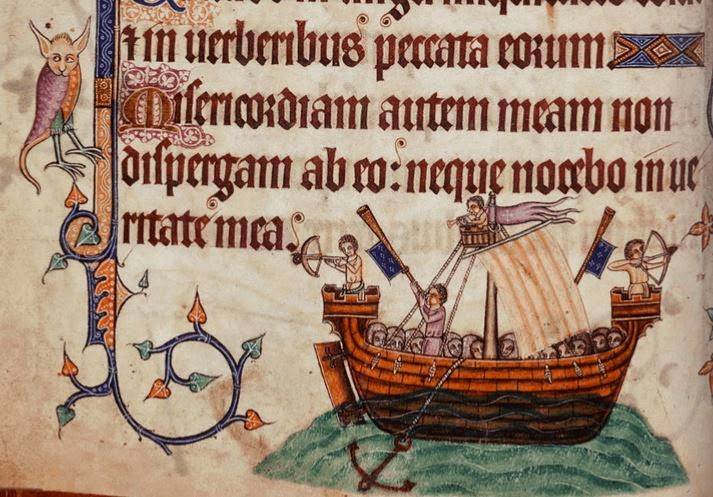
Ship 1335 - 1345's.
What unusual can be found in Latrell's Psalter?
Medieval tradition was such that, as usual, luxuriously illustrated medieval hymns should depict King David, the supposed author of the Psalms, the faces of saints, and some biblical scenes, so to speak, "related to the topic." It was possible to insert images of scenes of peasant labor and life into them, but this hymn is different from others in their number and in the set of absolutely charming details. These very lively and sometimes even humorous pictures are in fact a very real documentary about how peasants worked and spent time on the Jeffrey Manor throughout the year. And they show that he was obviously very humane towards them and that they even had time to play.
Sir Jeffrey Latrell is having lunch surrounded by households and two Dominican monks.
Turning page by page, we see women harvesting wheat and rye (in the Middle Ages, harvest was considered not feminine - remember Charles Pérette’s Puss in Boots, which mentions reapers and mowers, but the harvest should be gathered as soon as possible so that not a grain was lost, so everyone was involved in the harvest, peasant women who feed the chickens, scenes of cooking and its use. Warriors, merchants, bear hunters, dancers, musicians, a false bishop along with a dog who jumps through a hoop and even a wife that whips her husband (the scene is truly amazing!) - all these pictures were depicted on the lower, upper and even lateral the fields of the psalter pages.
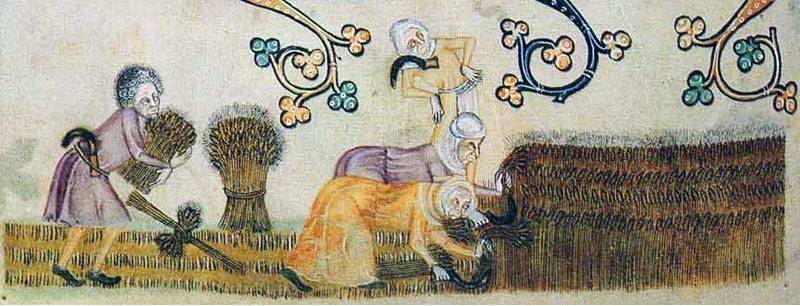
Reaper women.
Peasants thresh bread.
All these “pictures” played a big role in shaping the romantic image of “good old England” in which rich and virtuous lords lived, peasants who had a rest with the same zeal with which they were, were, in fact, his children. Today, scientists believe that everyday scenes from the life in “Psalms of Latrell” are quite strongly idealized. But, on the other hand, they were created after all for the pleasure of Jeffrey's sulfur, and by no means its employees. On the other hand, too much “lying in front of the eyes of the Lord” was a terrible sin, especially in the pages of the “eternal book.” That is, most likely, the author of all these illustrations was justified by the fact that he considered “and I see it that way”, “this may well be”, “I heard about it somewhere”, “the godfather told me about it”, and so further, that is, he seemed to lay out his guilt for the distortion of reality on many others.
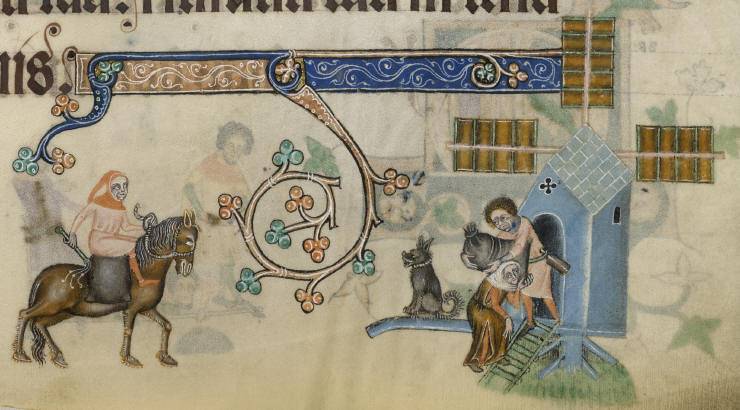
On the windmill they carry grain in bags.
A farmer with a sling drives the birds away.
Who was the one who created this manuscript?
It is known that medieval manuscripts were a collective creation, which is why they do not have an author. That is, several people participated in their creation. One or several scribes wrote the text itself, and some only capital letters, and as many as four artists drew ornaments and illustrations. So the "Psalter of Latrell" is the work of one scribe and as a whole "brigade" of artists whose names did not reach us, and could not reach in light of the circumstances known to us. Perhaps this book was created in Lincoln, but this is nothing more than an assumption. It is based on the fact that the customer had to live nearby and was interested in periodically visiting the masters and watching how the work was going. After all, at that time there was little entertainment among the feudal lords, and so - “I'm going to go to Lincoln, see how my hymnal is spelled!” - this is his all day entertainment!
What kind of strange animals are shown in this book?
An impressive decoration created by a very gifted artist, informally called the “Master”, are miniatures in the middle of the book in the so-called “arabesques”: these are hybrid monsters that have a human head, a body taken from an animal, fish or bird, and the tail is ... plant. In them we see the author’s utmost observation and attention to trifles, as well as a clear ability to be creative and subtle humor. It seems that they have nothing to do with the text that they accompany. Interestingly, their foliage is depicted as limbs, as in the Jewish manuscript of the Duke of Sussex, the German Pentateuch. All of these monsters contrast sharply with the religious figure of a man praying at the beginning of the manuscript.
"Fishman". Monsters each other whimsical and fun. And they do not look scary, although very unusual. That is, a person with a rich imagination drew them, but it is not known what this could mean!
"The dragon lion in a hat"
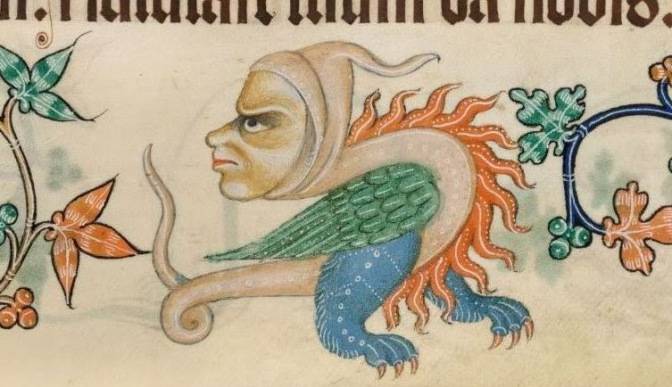
"Dragon Man"
"Swine"?
Since we are on the VO website, we, of course, should be interested in the military aspect of the images in this psalter, and it is really present in it. These are images of Sir Latrell in full knightly gear. It is very well shown that he has a helmet with a bascinet on his head, which plays the role of a balaclava, and a “big helmet” was also worn above. The top of it, however, is not flat, but of a pointed form and, moreover, it is also equipped with a visor. The shield is very small, in the form of an iron. A triangular pennant pennon on his spear indicates that he is “a knight of one shield”. Experts have calculated that his stamped image on a miniature - clothing and armor is repeated 17 times, that is, Jeffrey Latrell was really proud of his coat of arms! It is also interesting that the “birds” on the right side of the blanket (and decorations) look from left to right, although following the image on the shield (which can be clearly seen on the miniature!), They should look right to left. But this was not accepted, since in this case they would be called the "cowardly", as their backs turned to the enemy. Therefore, the image on the coat of arms was changed when applied to the blanket and ammunition knight!
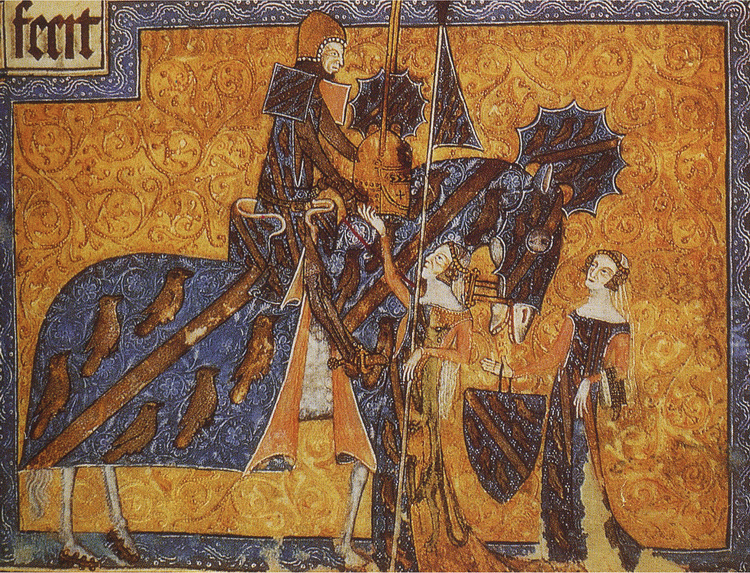
This is what the images of Sir Latrell and his family look like on the page of this hymnals.
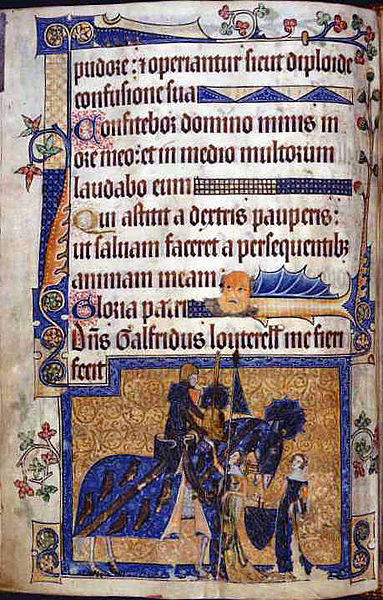
Interestingly, for some reason, a monster with a jagged flipper, which crosses a page from right to left, is above Sir Jeffrey's horse figure. And below, in the graceful and lush style of calligraphy of this era, adopted at that time, the inscription was made: “Lord Jeffrey Luttrell told me to do it.”
Interestingly, Sir Jeffrey Luttrell himself did not belong to the very top of the 14th century English society. He was just lucky that he found an unknown genius for himself, who painted his family hymn in such a bizarre way and immortalized the name of this, in general, not a very noble knight from Lincolnshire. Where this artist came from and why we don’t know anything at all about the other works he has done remains a mystery. The only name that is associated with this masterpiece of medieval manuscripts is the name of Sir Jeffrey himself, the customer of this unique work. But it should be noted that this artist had an excellent sense of humor and a rich imagination, which many other illustrators of medieval manuscripts were deprived of. Interestingly, by tradition, at the beginning, after compulsory praise to the Lord, a miniature directly dedicated to the customer was placed. On it, Sir Geoffrey, with a characteristic Norman profile, sits majestically on a huge warhorse and takes the helmet from the hands of his no less aristocratic Norman wife. The daughter-in-law is right there waiting for the opportunity to hand him a shield. On both women heraldic dresses, from the drawings on which it is not difficult to establish the existence of kinship ties between the Luttrell family and the Suttons and Scrotalts from Masham. All these three families were linked by marriage, and on each figure you can see the coats of arms of these families.
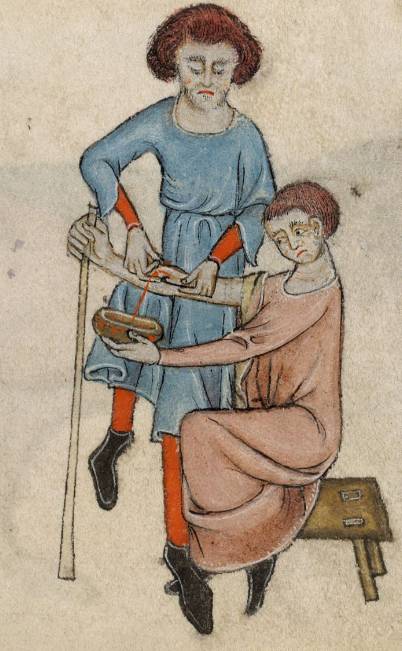
Bloodletting
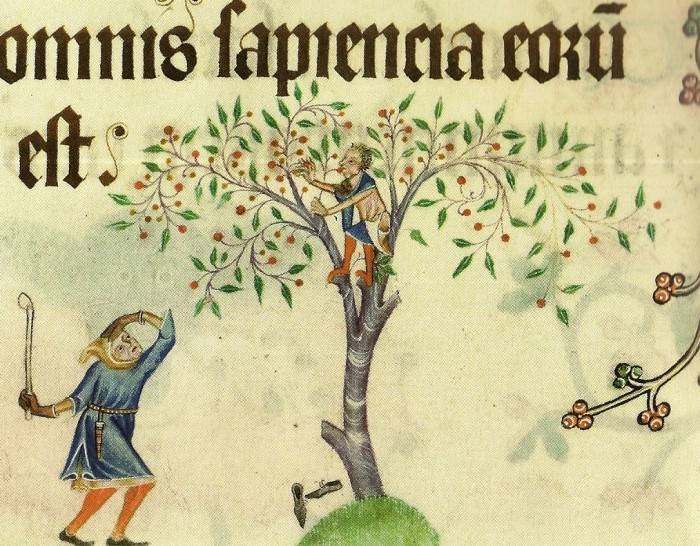
A little rogue rips other people's cherries.
And of course, the illustrations of "Psalms of Latrell" are unusual primarily because they tell in great detail about the work of ordinary English peasants. For example, this is where women in a close pen are engaged in milking sheep. Collected milk is carried away in jugs and containers, putting them on the head, just like in the East. And then make cheese out of it!
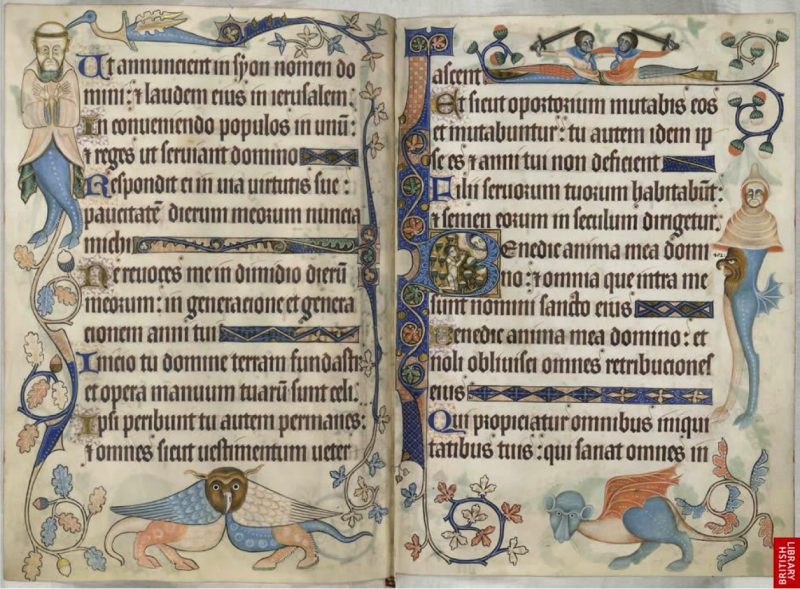
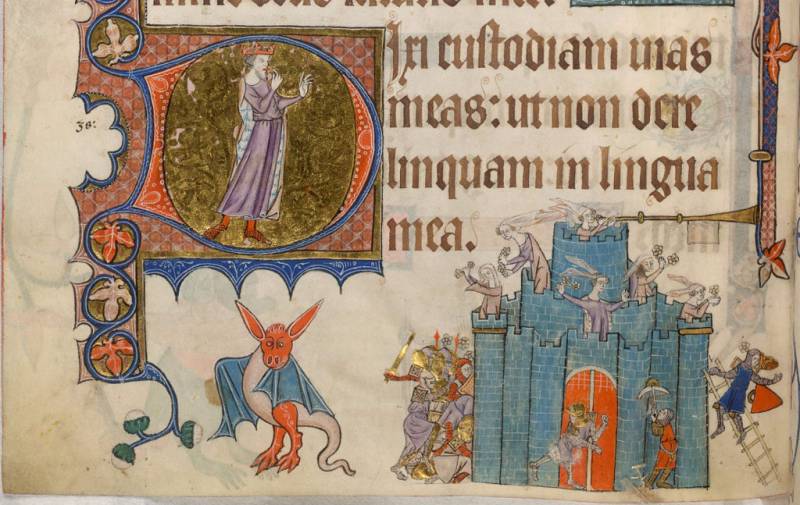
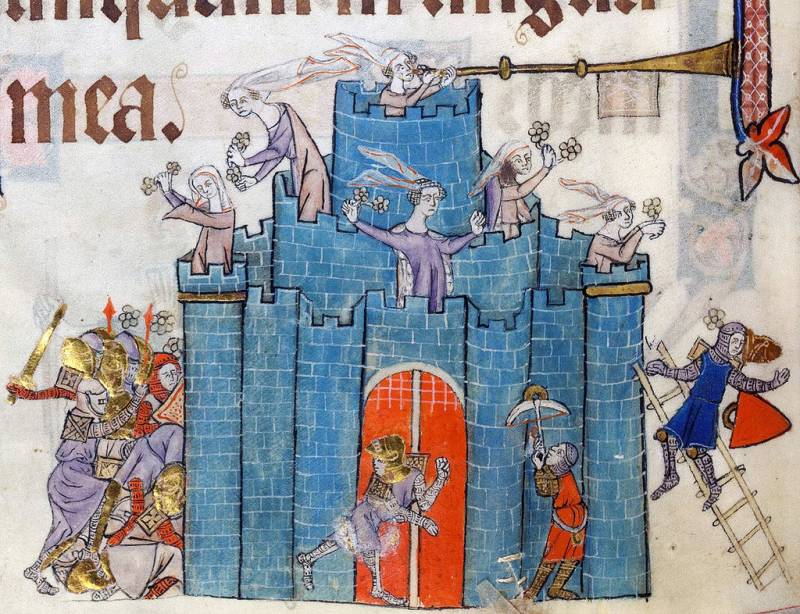
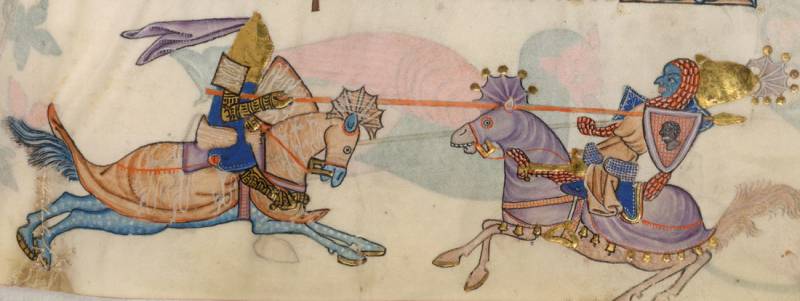

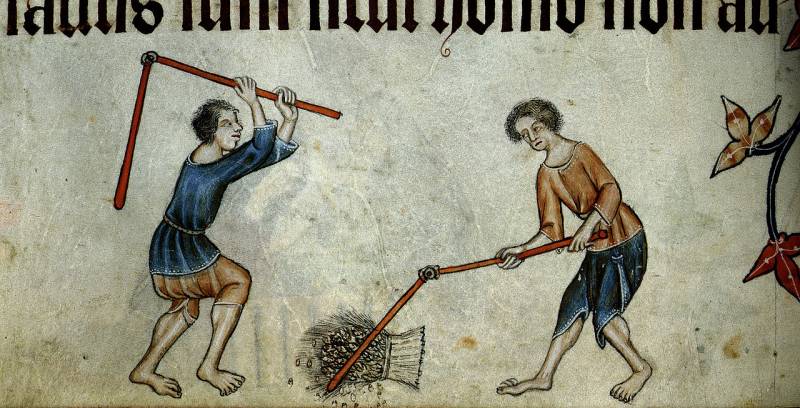
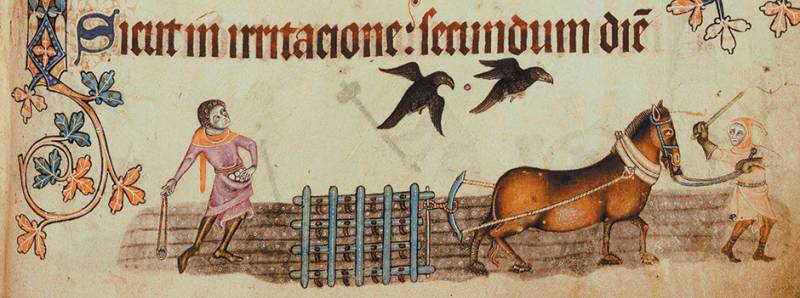
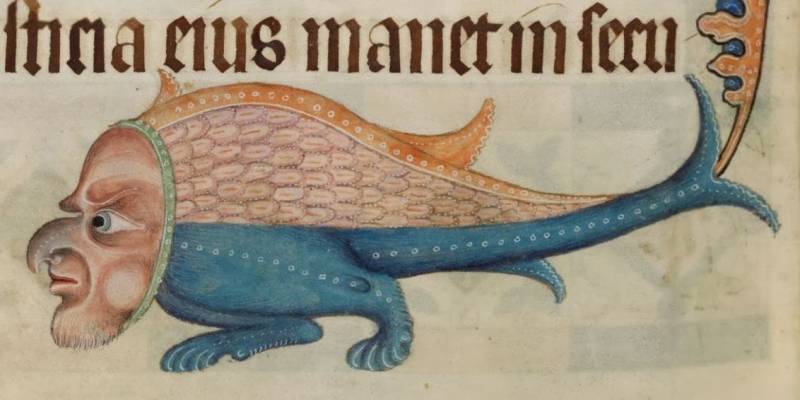
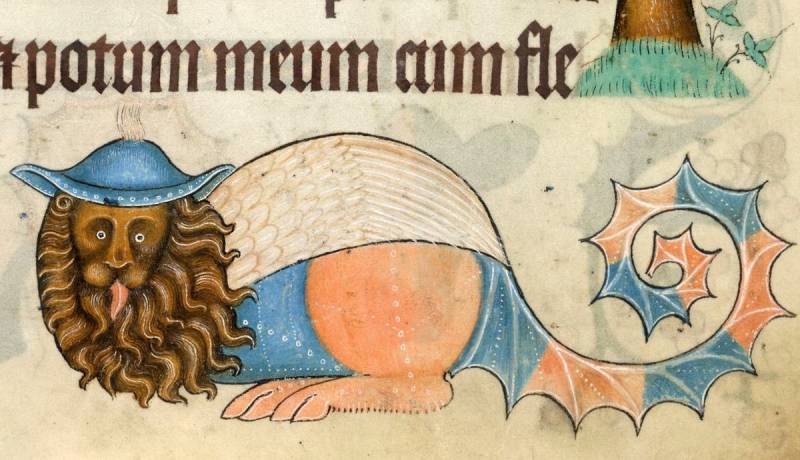
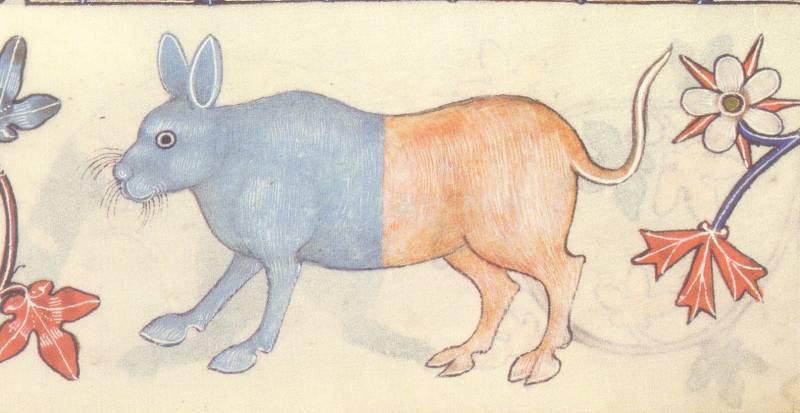

Information